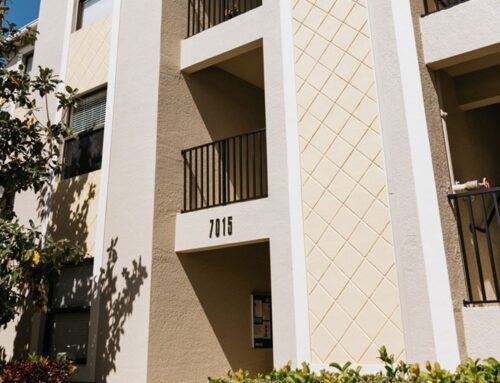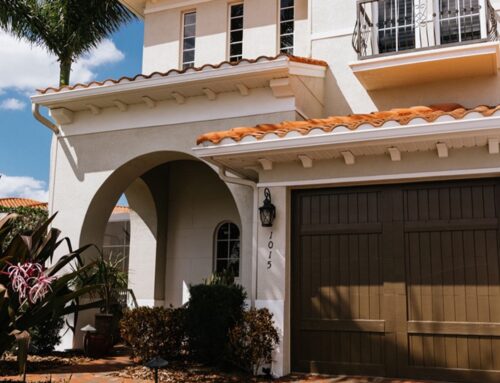Imagine walking into your home and feeling an immediate sense of comfort, as if the very walls embrace you with hues that reflect your personality. The power of color extends beyond mere aesthetics—it shapes the ambiance, influences emotions, and enhances the functionality of each space. Choosing the perfect paint colors is more than a design decision; it’s an opportunity to craft an environment that truly feels like home.
From the psychology behind different hues to the impact of finishes and spatial illusions, understanding the science of color selection ensures that every room in your home tells a cohesive and compelling story.
How Color Affects Mood and Atmosphere
Color psychology offers a fascinating perspective on how different shades evoke emotions and behaviors. According to research published in the Journal of Environmental Psychology, colors significantly impact mood, making them a powerful tool in interior design.
Blue, for instance, is associated with tranquility and stability, making it ideal for bedrooms, bathrooms, or meditation spaces. On the other hand, red can evoke energy and passion, often used in dining areas or accent walls to create a lively atmosphere. However, red’s intensity should be used sparingly in smaller rooms to avoid an overwhelming effect.
Green has been found to enhance concentration and reduce eye strain, making it a great choice for home offices or study areas. Meanwhile, yellow, known for its warmth and cheerfulness, is commonly used in kitchens and dining rooms, as it can stimulate appetite and conversation.
The Role of Color in Perception of Space
Strategic color choices can alter how a room is perceived. Light colors such as white, beige, or pastels reflect more light, creating the illusion of spaciousness in smaller rooms. In contrast, darker tones like navy blue or deep emerald green add coziness but can also make a room feel more enclosed.
This principle is particularly important in homes with open floor plans, where cohesive color transitions help define different areas without harsh contrasts. Thoughtfully placed accent walls can provide visual interest while maintaining balance.
Cultural Influences on Color Selection
Cultural associations play a significant role in how colors are perceived. In Eastern cultures, red symbolizes luck and prosperity, whereas in Western design, it’s often linked to urgency or boldness. Blue is seen as a corporate, trustworthy color in the U.S., while in Mediterranean design, it reflects coastal relaxation.
For homeowners who draw inspiration from global aesthetics, blending colors from different cultural traditions can infuse the home with deeper personal significance. Whether it’s a Moroccan-inspired terracotta, a Scandinavian minimalist white, or a tropical Caribbean teal, color choices can make a space feel uniquely personal and globally inspired.
Using Complementary Colors for a Harmonious Design
The color wheel is a valuable tool in interior design, helping homeowners pair hues that enhance each other. Complementary colors, such as blue and orange or green and red, create striking visual balance by combining cool and warm tones.
For a softer approach, analogous color schemes (where shades next to each other on the color wheel are used) create a more natural and soothing look. For instance, layering different shades of blue and green mimics the ocean’s calming influence, making it ideal for relaxation spaces.
Choosing the Right Paint Finish
Paint finishes play a crucial role in the final look and durability of a space. Matte finishes offer a soft, understated elegance and help mask wall imperfections, making them ideal for older homes. Glossy and semi-gloss finishes, on the other hand, reflect more light, making them a good choice for trim, cabinets, and high-traffic areas that require frequent cleaning.
Satin and eggshell finishes strike a balance between matte and gloss, offering subtle sheen while remaining easy to maintain. These finishes work well in living rooms and hallways, where walls need to be both stylish and durable.
Using Color in Functional Spaces
Paint choices go beyond aesthetics; they enhance the practicality of a space. Studies suggest that specific colors can improve focus, relaxation, or energy levels.
- Home offices and study areas: Shades of blue and green encourage productivity and concentration.
- Living rooms and gathering spaces: Earthy tones like warm taupe, soft grays, and muted greens create an inviting environment.
- Bedrooms: Soft pastels, muted blues, and lavender promote relaxation and better sleep.
- Kitchens and dining rooms: Warm colors like burnt orange, soft yellow, and deep red stimulate appetite and sociability.
Integrating Color Through Décor and Accents
While walls set the primary tone, color can also be introduced through furniture, artwork, textiles, and décor. A neutral-toned room can be elevated with bold-colored throw pillows, area rugs, or statement furniture pieces.
Artwork plays a significant role in color integration, offering a way to introduce complementary or contrasting hues without repainting. A gallery wall featuring a mix of color palettes can tie together different elements in a room, adding character and depth.
Transform Your Home with Thoughtful Color Choices
Understanding how colors interact with light, space, and emotion allows homeowners to create a harmonious and functional living environment. Thoughtful color selection ensures that each room serves its purpose while reflecting personal style.
Choosing the right colors for your home is a transformative experience, and expert guidance can make all the difference. At A Step Above Painting, we specialize in bringing color concepts to life, ensuring every space is designed for beauty, comfort, and longevity. Whether you’re considering a subtle refresh or a bold new statement, we’re here to help. Contact us today for a free consultation and let’s bring your vision to life with the perfect color palette.





